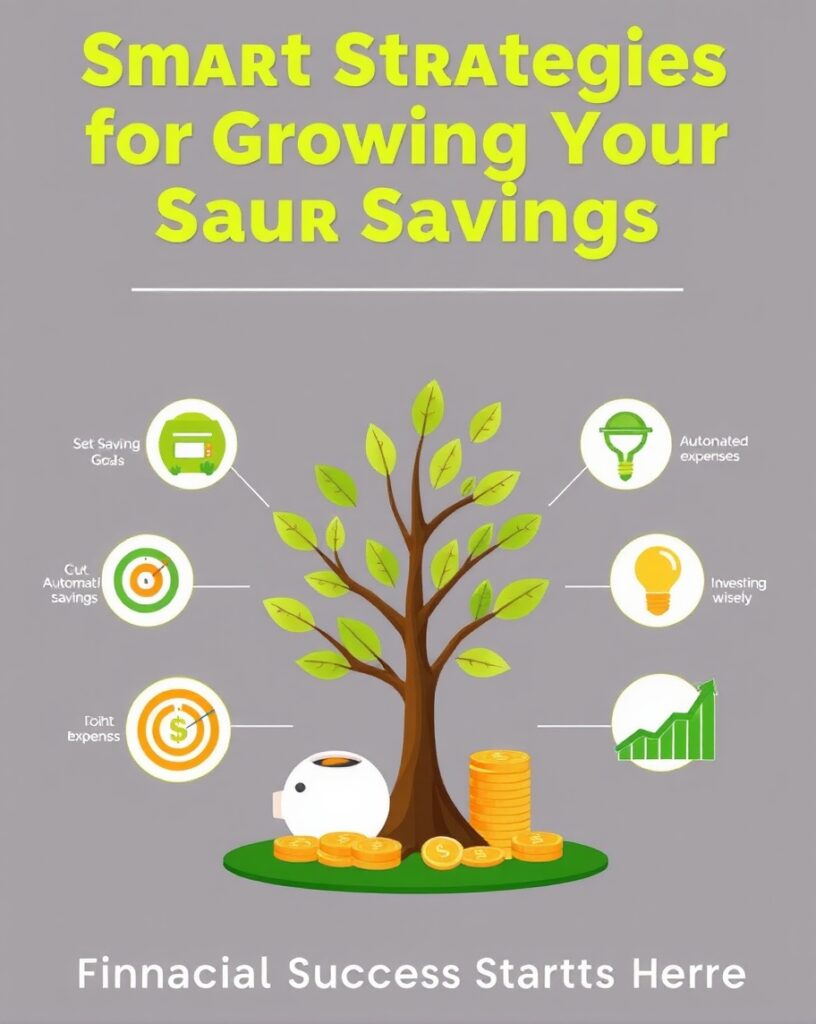In today’s fast-paced financial landscape, growing your savings is more important than ever. Whether you’re saving for a major purchase, a comfortable retirement, or an emergency fund, having effective strategies in place can make a significant difference in your financial future. This blog will explore smart strategies to help you grow your savings and achieve your financial goals.
1. Set Clear Savings Goals
The first step to growing your savings is to establish clear and achievable goals. Having specific targets will motivate you to save and make it easier to track your progress.
How to Set Goals:
- Identify Your Objectives: Determine what you are saving for, whether it’s a vacation, home down payment, retirement, or emergency fund.
- Create a Timeline: Establish a timeline for achieving your goals. This will help you determine how much you need to save each month.
- Make Your Goals SMART: Ensure your goals are Specific, Measurable, Achievable, Relevant, and Time-bound.
2. Create a Budget and Stick to It
A well-structured budget is essential for managing your finances and ensuring you allocate enough money toward your savings.
Budgeting Tips:
- Track Your Income and Expenses: Use budgeting apps or spreadsheets to categorize your income and expenses. This will help you identify areas where you can cut back.
- Prioritize Savings: Treat savings as a fixed expense. Allocate a specific percentage of your income to savings each month.
- Adjust Your Budget Regularly: Revisit and adjust your budget as needed to account for changes in your financial situation.
3. Automate Your Savings
Automating your savings can help you consistently contribute to your savings goals without having to think about it.
How to Automate Savings:
- Set Up Automatic Transfers: Arrange for a portion of your paycheck to be automatically deposited into your savings account. This “pay yourself first” strategy helps you prioritize savings.
- Use Savings Apps: Consider using apps that round up your purchases and save the spare change or allow you to set recurring transfers.
4. Choose the Right Savings Accounts
The type of savings account you choose can significantly impact your ability to grow your savings.
Types of Savings Accounts:
- High-Yield Savings Accounts: These accounts offer higher interest rates than traditional savings accounts, allowing your money to grow faster.
- Certificates of Deposit (CDs): CDs typically offer higher interest rates in exchange for locking your money away for a specified term. This can be a good option if you don’t need immediate access to your funds.
- Money Market Accounts: These accounts often provide higher interest rates and limited check-writing capabilities, making them a flexible option for savings.
5. Cut Unnecessary Expenses
Reducing unnecessary expenses can free up more money to put toward your savings goals.
Expense-Cutting Tips:
- Review Subscriptions: Cancel any subscriptions or memberships you don’t use regularly.
- Cook at Home: Eating out can significantly impact your budget. Cooking at home is often healthier and more cost-effective.
- Shop Smart: Look for discounts, use coupons, and compare prices before making purchases to save money.
6. Increase Your Income
Finding ways to boost your income can accelerate your savings growth and help you reach your financial goals faster.
Ways to Increase Income:
- Side Hustles: Explore freelance work, consulting, or part-time jobs that leverage your skills and interests.
- Sell Unused Items: Declutter your home and sell items you no longer need. Use the proceeds to boost your savings.
- Negotiate Your Salary: If you feel you deserve a raise, prepare your case and approach your employer for a salary negotiation.
7. Take Advantage of Employer Benefits
Many employers offer benefits that can help you grow your savings, particularly for retirement.
Employer Benefits to Consider:
- Retirement Plans: Contribute to your employer’s retirement plan, especially if they offer matching contributions. This is essentially free money that can significantly boost your savings.
- Flexible Spending Accounts (FSAs): If available, use FSAs to set aside pre-tax dollars for medical expenses, which can save you money in the long run.
8. Invest Your Savings Wisely
Once you have a solid savings foundation, consider investing your savings to grow your wealth over time.
Investment Strategies:
- Index Funds and ETFs: These investment vehicles offer diversification and typically have lower fees than actively managed funds, making them accessible for beginner investors.
- Robo-Advisors: If you’re unsure about where to invest, consider using a robo-advisor to manage your investments based on your financial goals and risk tolerance.
- Educate Yourself: Continuously learn about investing through books, podcasts, and online courses to make informed decisions about your savings and investments.
9. Monitor and Adjust Your Strategy
Regularly reviewing your savings progress and adjusting your strategies as needed is essential for long-term success.
How to Monitor Your Savings:
- Review Your Goals: Assess your savings goals periodically and make adjustments based on changes in your life circumstances or financial situation.
- Track Your Progress: Use budgeting apps or spreadsheets to monitor your savings and investment growth over time.
- Stay Informed: Keep up with financial news and trends to adapt your strategies accordingly.

